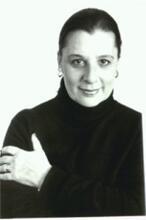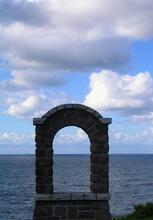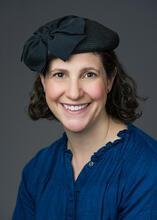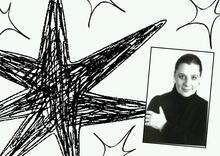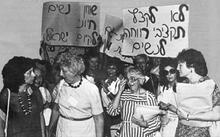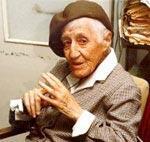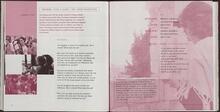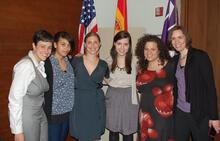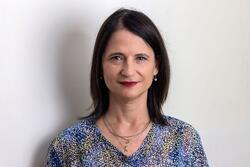Jewish Orthodox Feminist Alliance
JOFA, the Jewish Orthodox Feminist Alliance, was the first Orthodox feminist organization in the United States. Since 1997, it has striven to expand Jewish women's religious and spiritual roles within the parameters of halakhah and to address specific halakhic issues related to women in marriage and divorce. JOFA provides practical suggestions for increasing women's participation in religious rituals and halakhic-theoretical views on modern Jewish observance. The organization strongly supports female Torah study and leadership.
Introduction
JOFA, the Jewish Orthodox Feminist Alliance, was the first Orthodox feminist organization in the United States. It strives to expand Jewish women's religious and spiritual roles within the parameters of The legal corpus of Jewish laws and observances as prescribed in the Torah and interpreted by rabbinic authorities, beginning with those of the Mishnah and Talmud.halakhah (Jewish law) and to address specific halakhic issues related to women in marriage and divorce.
The organization's founding event was the International Conference on Feminism and Orthodoxy, held in 1997 at New York City’s Manhattan Hyatt. The initiators and organizers were four observant Jewish women from New York: Esther Farber (1935-2003), Bat Sheva Marcus, Ronnie Becher, and Blu Greenberg. Each had already dealt personally with the growing tension between religious life and modern life with respect to feminist values. Blu Greenberg served as founding President, followed by Carol Kaufman Newman, Judy Heicklen, Bat Sheva Marcus, and Pam Scheininger.
Historical background
After thousands of years in which Jewish observance in the public sphere was male-centered, a feminist awakening affected all American Jewish denominations. In the wake of the emergence of second-wave feminism in the United States in the 1960s, the first National Jewish Women's Conference took place in New York City in 1973, with a follow-up conference the next year. Attended by women from across the religious spectrum, the Conference highlighted the gap between the Jewish and feminist identities many women felt, allowing for dialogue and eventually for change. Blu Greenberg gave the keynote address, calling the conference a "portal into Judaism" (Quoted in Antler, 2018, p. 205). Since then, the more liberal Reform, Conservative, and Reconstructionist movements have brought about far-reaching changes in women's status, including full equality in obligation to fulfill A biblical or rabbinic commandment; also, a good deed.mitzvot, full public participation, rabbinic ordination, the performance of judicial functions, the ability to making halakhic rulings, and spiritual leadership.
In modern Orthodoxy, the situation was more complicated. The commitment to halakhah and tradition, along with fear of any change that could appear unorthodox, shaped a slow and suspicious trajectory. Some changes did slightly stretch the boundaries of halakhah prior to the formation of JOFA. For example, women’s prayer groups expanded women’s religious leadership and participation, mostly notably through the Women's Tefillah Movement, which began in the late 1960s at Lincoln Square Synagogue in Manhattan and expanded slowly. In these groups, women conducted prayer themselves, without the male quorum that is customary in all Orthodox congregations. Traditionally women weren’t allowed to count towards a minyan (quorum) because, according to halakhah, they are exempt from public prayer rituals and any requirement to hear the public Torah she-bi-khetav: Lit. "the written Torah." The Bible; the Pentateuch; Tanakh (the Pentateuch, Prophets and Hagiographia)Torah reading. Two halakhic concerns thus relate to the inclusion of women in prayer ceremonies. First, because one who is not obligated by a religious obligation cannot help others fulfill that obligation, women cannot lead the Prayertefillah or read from the Torah for the benefit of the entire public. Second, the principle of kevod ha-tsibbur (congregational dignity) holds that the participation of women in the reading of the Torah and their entrance into the synagogue's men’s gallery may harm the dignity of the men who constitute the public. Gender separation thus enabled women to lead ceremonies, carry and dance with the Torah scroll, and read from the Torah without violating halakhah. Prayer services were often tied to The new moon; the first day of the month; considered a minor holiday, especially for women.Rosh Hodesh, while other groups met once a month on Shabbat. With halakhic support from some Orthodox decisors during the 1980s, the Women's Tefillah Network (WTN) was formed. Around the turn of the twenty-first century, more than 40 such groups existed in North America, Israel, England, and Australia. Since the establishment of JOFA, however, the need for the WTN has decreased, as JOFA has fulfilled many of the network's roles. Indeed, Bat Sheva Marcus, one of the WTN’s foremost early activists, was one of JOFA’s founders.
Another major issue for Orthodox feminism is gender inequality in halakhic marriage, from the traditional wedding ceremony to the problematic status of the agunah. [link to new entry on agunot] In the Jewish wedding ceremony, the man “buys” the woman, while the woman has no active part in the ceremony. Moreover, traditionally only men conducted the ceremony, although this is not a halakhic requirement. In case of divorce, because the man began the marriage, only he may divorce his wife; as a result, if a man does not grant his wife a divorce, she remains married to him formally, and if he is absent for any reason for a long time, she remains married and is forbidden to remarry. This inequality leaves much power in men's hands.
Main Activities
Throughout the years, JOFA has promoted its goals by such various activities as organizing conferences and publishing quarterly journals focusing on Judaism and feminism in the United States and beyond; it also promotes female Torah study by providing scholars with funding and ideological support and publicizing their work and by organizing “Shabbat Telamdeini” ("teach me" in Hebrew), in which female Torah scholars teach in a variety of congregations. It also operates an Woman who cannot remarry, either because her husband cannot or will not give her a divorce (get) or because, in his absence, it is unknown whether he is still alive.agunah task force helping women obtain religious divorces in Lit. "house of judgement." Jewish court of lawbet din networks with other organizations nationally and internationally, and publishes hundreds of articles on its website about the life cycle, ritual practice, participation and leadership, education, community challenges, Orthodoxy and feminism, the agunah, and more. The organization has become a prominent and unique social agent within the modern Orthodox community in the United States.
Conferences
The growing interest in the problem of the agunah in Jewish communities in the United States in the 1990s, along with the emergence of an increasing number of Orthodox women committed to feminism, led to the first International Conference on Feminism and Orthodoxy (which later became JOFA conference). Since this founding conference in 1997, JOFA has held eight international conferences in the United States (1998, 2000, 2002, 2004, 2007, 2010, 2013, and 2017), each with over 1000 participants, lasting two or three days, and including sessions on a wide variety of topics relating to Jewish women. These conferences raise awareness and bring together many women, as well as some men. Conference attendees are mostly Orthodox but include some Conservative and other Jews. Topics covered in panel discussions and classes range from women in the synagogue to women and Torah scholarship, female rabbis, LGBTQ inclusion, and even Orthodox sex therapy.
Journals
Several times each year JOFA publishes a journal on topics related to the organization's goals. The journal emphasizes connections with similar organizations globally, as well as changes in communities around the world that can serve as a model for American communities. Most of the writers are women, although men do write occasionally. Authors are often religious leaders, women of halakhic authority, rabbis, JOFA activists, or academics in the field of Jewish Studies.
The first JOFA Journal, published in the Fall of 1998, was entitled "Moving Ahead as Orthodox Jews." All the articles were written by women; they dealt with broad changes required in girls’ Jewish education, women's prayer, and the halakhic attitude towards women. The journal included reports about Jewish feminism around the world and publicity for the first conference of Kolech: Religious Women’s Forum, the Israeli organization equivalent to JOFA, on "woman and her Jewish life," which took place in 1999
In contrast, the Summer 2003 edition of the JOFA Journal on weddings not only spoke broadly about the subject but also provided practical suggestions and information about changes that had already taken place. The journal included a proposal for a new and collaborative gender interpretation of the canopy entrance ceremony, as well as practical steps allowed by halakhah, such as the Two-Ring Ceremony, that could be taken to make the wedding ceremony more gender-balanced. One contributor described a personal experience of adapting the ancient ritual to the egalitarian-modern conception from a feminine and then a masculine perspective. Another personal story raised the possibility of the Marriage document (in Aramaic) dictating husband's personal and financial obligations to his wife.ketubbah being read by a woman. Another article discussed the halakhic need for a partition at weddings. The book review section offered four new books dealing with women and Judaism, both religiously and academically. The journal concluded with an update on another Kolech conference in Israel and actions for agunot in Israel, as well as a film festival organized by JOFA in New York. Among the writers were two men, including Rabbi Dov Linzer, head of Yeshivat Chovevei Torah (YCT).
Over the years, the JOFA Journal thickened from a few pages to dozens of pages in each issue. The themes discussed can be divided into three types: 1) Theoretical, such as feminism and the possibility of changes in halakhah; 2) Factual, for example, the history of the establishment of JOFA, or information regarding women and religion and Jewish women and art in Israel; and 3) Practical (the most common type), such as modesty, synagogue partition, women's leadership, birth rituals, and agunot. The issue of agunot has been widely debated twice and mentioned numerous times, as it remains a significant challenge in Jewish Orthodoxy.
Advocacy
Providing resources to empower agunot has been an integral part of JOFA's mission since its founding. Initially, this was done through an agunah task force, which is now included within JOFA's day-to-day operations. The task force raised awareness by sending letters and writing to Jewish courts and rabbis asking them to be aware of the agunot's distress and to use all possible halakhic tools to prevent this; it even created the Agunah Solidarity Pin, proceeds from which supported the agunah task force. The task force also engaged in dialogue with rabbis and rabbinic judges, re-examined potential halakhic solutions, and developed an ongoing database of referrals to Batei-din, lawyers, social workers, and support groups agunot may contact for help. Materials for women seeking relief are posted on the JOFA website, including copies of prenuptial agreements and sources dealing with Jewish divorce law and mediation. JOFA is committed to educating young women on the significance of prenuptial agreements.
Continuing its support of female Torah study, JOFA also began to encourage women's halakhic leadership in communities, schools, and other settings. Despite opposition to women’s rabbinical ordination from American Orthodox organizations, such as the Orthodox Union and the Rabbinical Council of America, JOFA continues to promote women’s religious leadership and offers a financial scholarship to synagogues that hire women for long-term positions as rabbis or synagogue presidents. The JOFA website includes a list of dozens of such women, entitled "Wall of Honor: Celebrating Women Presidents of Orthodox Synagogues."
In the past decades, JOFA has published several halakhic guides to women's involvement in Orthodox Jewish rituals. Halakhic publications collected by female Torah scholars called Ta Shma (“come and listen,” in Aramaic) were printed and distributed at various JOFA events. Some were merged into a book published by the organization. Additionally, Holiday Guides and Handbooks for A seven-day festival to commemorate the Exodus from Egypt (eight days outside Israel) beginning on the 15th day of the Hebrew month of Nissan. Also called the "Festival of Mazzot"; the "Festival of Spring"; Pesah.Pesah, Lit. "weeks." A one-day festival (two days outside Israel) held on the 6th day of the Hebrew month of Sivan (50 days, or 7 complete weeks, from the first day of Passover) to commemorate the Giving of the Torah on Mount Sinai; Pentecost; "Festival of the First Fruits"; "Festival of the Giving of the Torah"; Azeret (solemn assembly).Shavuot's Megillat Ruth reading, Ushpizot for Lit. "booths." A seven-day festival (eight days outside Israel) beginning on the 15th day of the Hebrew month of Tishrei to commemorate the sukkot in which the Israelites dwelt during their 40-year sojourn in the desert after the Exodus from Egypt; Tabernacles; "Festival of the Harvest."Sukkot, and Lit. "rejoicing of the Torah." Holiday held on the final day of Sukkot to celebrate the completing (and recommencing) of the annual cycle of the reading of the Torah (Pentateuch), which is divided into portions one of which is read every Sabbath throughout the year.Simhat Torah Aliyot Recordings are available on the JOFA website.
The organization also has an active Facebook page where events are publicized and many discussions are held. The online platform and the English language enable partnerships with women from all over the US and the world.
Collaborations
JOFA collaborates with institutions such as Yeshivat Maharat, which ordains women as Orthodox rabbis, and religious organizations such as the International Beit Din for Agunot.
JOFA’s founders invited observant Israeli women to its first conference, where they were encouraged to establish their own parallel organization. Indeed, the Israeli Kolech: Religious Women’s Forum was founded about a year later. Since then, JOFA and Kolech have collaborated both conceptually and practically, with reciprocal visits to conferences and organized tours.
An example of a shared religious feminist action is promoting Lit. "scroll." Designation of the five scrolls of the Bible (Ruth, Song of Songs, Lamentations, Ecclesiastes, Esther). The Scroll of Esther is read on Purim from a parchment scroll.megillah reading by women, a topic that has received much attention in both organizations. The organizations do so through a variety of strategies, from publishing halakhic arguments for its existence today, through providing online audio clips that teach how to read the megillah, to posting international lists indicating communities that hold female megillah readings. It did not take long for this custom to become widespread in Modern Orthodoxy in Israel and the United States.
In 2103, a new British branch of the US organization was founded, called JOFA UK. The organization links what is happening in the two countries but mainly works locally to improve the place of Orthodox women. This branch of JOFA is also in contact with Israeli women of halakhic knowledge. Especially today, when online conversations predominate, this branch creates opportunities for joint Torah study.
Antler, Joyce. Jewish Radical Feminism. New York: New York University Press, 2018.
Berkovits Rachel, Devorah Zlochower, and Rosenfeld Jennie. Ta Shma: The Halakhic Source Guide Series. New York: JOFA, 2015.
Cohen Nusbacher, Ailene. “Efforts at Change in a Traditional Denomination: The Case of Orthodox Women's Prayer Groups.” Nashim No. 2, (Spring, 5759/1999): 95-113.
“Historic JOFA-Kolech Meeting of the Minds.” eJewish Philanthropy, October 12, 2012; v October 23, 2020. https://ejewishphilanthropy.com/historic-jofa-kolech-meeting-of-the-min…
"New program pays Orthodox synagogues to hire female religious leaders." Times of Israel, November 8, 2019; viewed on October 23, 2020.
Langer, Sidney. “Women’s Prayer Groups: A Case Study In Feminism And Modern Orthodoxy.” Ten Da'at, A Journal of Jewish Education, Vol. XI Sivan 5758 - Spring 1998.
Sarna, Jonathan D., American Judaism: A History. Second Edition. New Haven: Yale University Press 2019.
Tillinger Wolkenfeld, Sara. "Women and Megillah: Part of the Miracle." Ta shma: JOFA Webinar, March 5, 2014.
Tillinger Wolkenfeld, Sara. Editorial, "Women's Megillah reading Jewish Laws." Kolech website, published 2007, retrieved Oct.7 2020.
Weissman, Sara and Hannah Weintraub. “JOFA Conference Explores Orthodox Feminism on Campus,” New Voices, February 16, 2017; viewed October 23, 2020.

